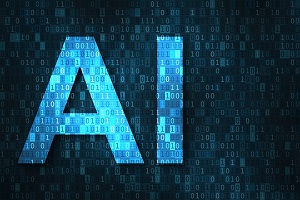This world is being stormed with data. There are 7.9 billion people on this planet and the digital & physical footprint that each individual is leaving per second is more than 1.7 MB. This data often gets lost in the vast pool of existing knowledge. Despite having all this information tracked & collected in databases it’s seldom used, causing the data to degrade over time.
Sir Francis Bacon once said, “Knowledge is power, but only if it is applied in the right way.” In the modern world, data is being collected every step of the way but mining insights from that data are what will eventually help organizations to find a pattern and find better ways of solving things and driving intelligent outcomes. This is where AI is a game-changer. If data is the new oil then Artificial Intelligence is the pump. Artificial Intelligence is arguably one of the best innovations of mankind – having made the most complicated tasks simple and accessible with just a touch of a button.
Making the Shift
To thrive, a business must keep evolving and stay agile. Organizations struggling to improve operational processes must build an AI-driven culture to survive. However, rushing into adopting AI is not the solution. Instead, dedicating time in the design and planning phase to create a holistic approach when it comes to building an AI culture is what will truly stand the test of time.
To scale up AI, companies must make three shifts:
- From siloed work to interdisciplinary collaboration. Implementing Artificial Intelligence-led operations in silos is not enough to fully chisel its enormity and the consequent efficiency, thereby making it imperative for the entire organization to imbibe the culture of AI completely in all its methods and processes. AI – popularly known as just the tech team’s job – has more far-reaching implications and applications than being labeled just as a departmental job. It is something that each level and department of an organization can leverage to its unique benefit and purpose.
- Tackle cultural resistance to AI-driven changes. Introductions to AI are often confusing and overly technical. To foster an AI culture from the ground up, it’s important to meet people where they are. To help the organization fully grasp the power of AI, the change can start small instead of thrusting upon the new systems and processes almost overnight. To support this digital transformation, the first step is to democratize the data. That means making the data accessible to all and making sure everyone in the organization can use it. Invest in a strong data warehouse solution to keep your data centralized, making it easier for everyone to access. It’s important to drive the message that “data is for everyone” and help people see how AI will help them leverage data to succeed both as individuals and the organization as a whole. The more aware an organization is, the better its chances of success. Conducting training sessions, publishing whitepapers, and discussing business use cases can help achieve the organization’s larger goal of imbibing AI as a part of its DNA. Empower your employees to experiment with analytics tools by leveraging no-code analytics solutions that are easy to use and have great built-in analytics functions which don’t require in-depth analytics knowledge. All these steps may require time and persistence but are truly effective when it comes to helping an organization embrace a culture of innovation.
- Bolster existing business intelligence efforts. In addition to developing AI champions within the organization, the employees must be encouraged to use their companies’ existing business-intelligence tools, from dashboards to visualization software, on data they already have. This can set in motion a culture of exploration which is vital to an AI-driven organization. As employees become more accustomed to using self-service analytics tools, they become more at ease with digging into the data to test hypotheses. Consequently, they begin to trust the data more thereby becoming more data-driven and inspired to brainstorm proactively how AI could help them tackle business challenges.
Setting up for success
In the long run, AI applications aren’t myopic and limited to just improving existing processes. Rather, they’re about exploring new ways of creating value that helps employees thrive in an organization and by extension, the organization as a whole. Developing an AI culture has to be in tandem with the company’s goals and vision and its uniform application throughout an organization makes the process of decision-making faster, smarter, and more comprehensive, empowering your business to build futuristic outcomes that stand the test of time.
About the Author

Vrinda Khurjekar – Sr. Director – AMER Business – Searce. A genuine problem solver at heart, a compassionate listener and a trusted client partner, Vrinda Khurjekar is the Sr. Director – AMER business at Searce leading the AMER region. A techie turned business leader, Vrinda is passionate about driving technology-led transformation and helping businesses futurify by leveraging latest technologies. Vrinda has been in various roles over the last 14 years at Searce, is a Happier Culture ambassador at Searce and a core member of the Searce global exec team. Vrinda has personally participated in leading many large clients through their digital transformation journeys. Vrinda believes in the power of customer empathy, listening to clients & partners & being a trusted partner to anyone she works with.
Sign up for the free insideBIGDATA newsletter.
Join us on Twitter: @InsideBigData1 – https://twitter.com/InsideBigData1





Speak Your Mind